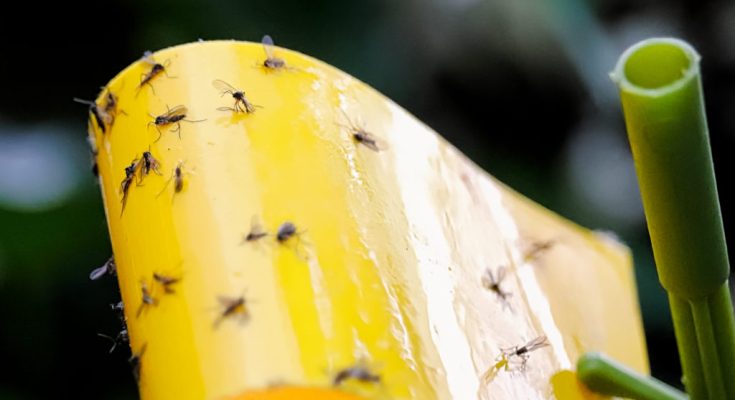Unwelcome pests on indoor plants are likely at some point in every plant parent’s journey, but it’s easy to rid your plant of these pesky bugs just by following a few simple steps.
Soil gnats, also known as fungus gnats, are a common pest to find on houseplants. These annoying pests can multiply if left untreated, and you’ll find yourself swatting them away left and right. The Grow-How® Team is here to help you learn how to treat and how to prevent soil gnats in the future. Read on to learn more.
What Are Soil Gnats?
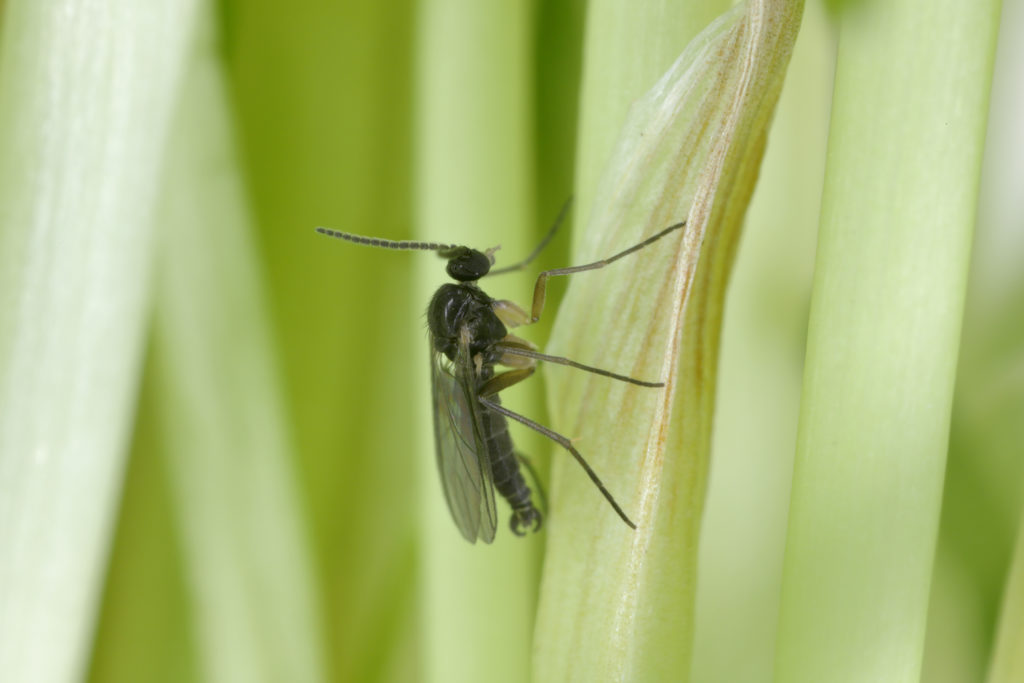
If you own houseplants and you have been swatting away teeny flying insects throughout your home, chances are they’re soil gnats. Otherwise known as fungus gnats, they are tiny flies that are attracted to organic matter, such as potting mix. They are a common houseplant pest and are often mistaken for fruit flies. In their adult form, they are approximately ⅛ to ¼ of an inch in size and they are brown or black with translucent wings.
Adult soil gnats lay eggs in the soil of houseplants. These eggs turn to larvae, which feed on the organic matter in the soil. The larvae will grow wings and turn into their adult form, and the life cycle begins again. They can multiply quickly if the environment is humid and houseplant soil is staying overly moist.
Soil gnats are understandably a nuisance for plant parents. As frustrating as these pests can be, they rarely damage the plants themselves. Typically, they only cause damage to houseplants if the infestation is very severe and there are a lot of larvae in the soil. The larvae can feed on the roots, which can affect the health of the plant in the future, but this isn’t very common with well-established houseplants.
If you think you have soil gnats, don’t fret! They are easily treatable and you can get rid of these pesky insects in no time.
How to Treat Soil Gnats
Plants can be treated to get rid of a fungus gnat infestation. The Grow-How® Team has put together an effective treatment. Just follow the steps below to treat your plant for soil gnats:
Step 1: Control the adult population
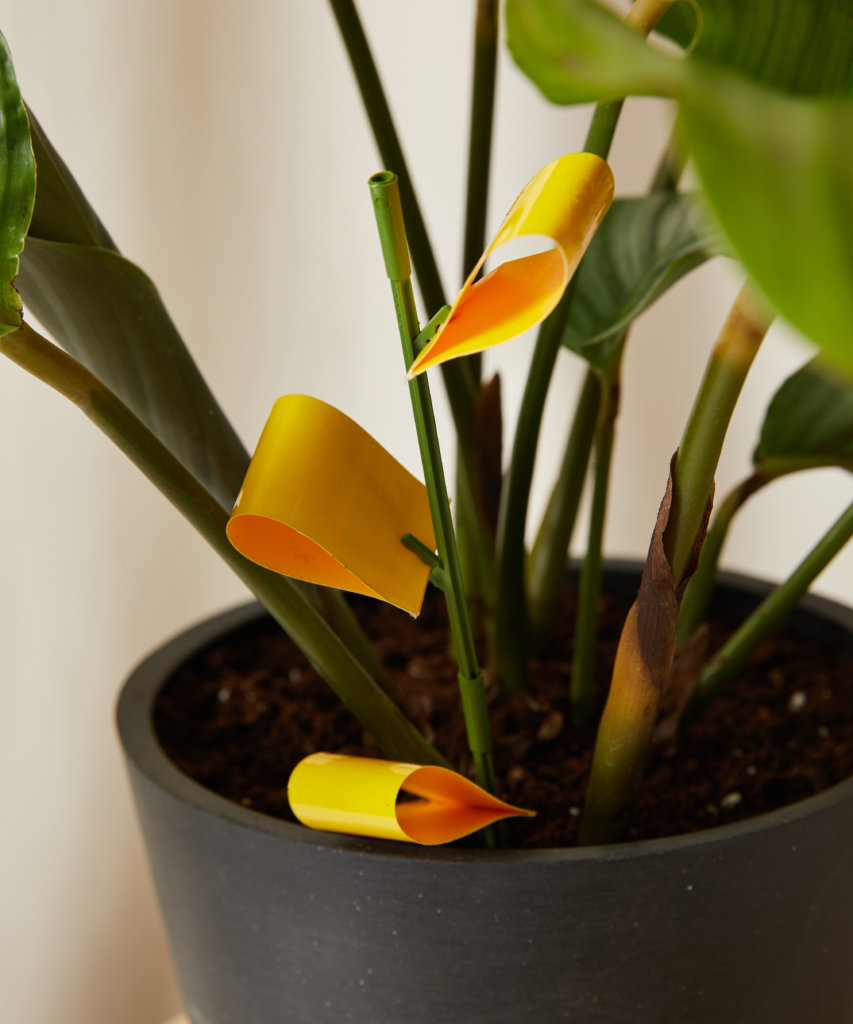
You will want to first start trapping the adult soil gnats. This will help to slow down reproduction. You can use yellow sticky traps like these to help control adult populations. Soil gnats are attracted to the color yellow, and once they fly onto the sticky trap, they are stuck for good!
Step 2: Treat the soil
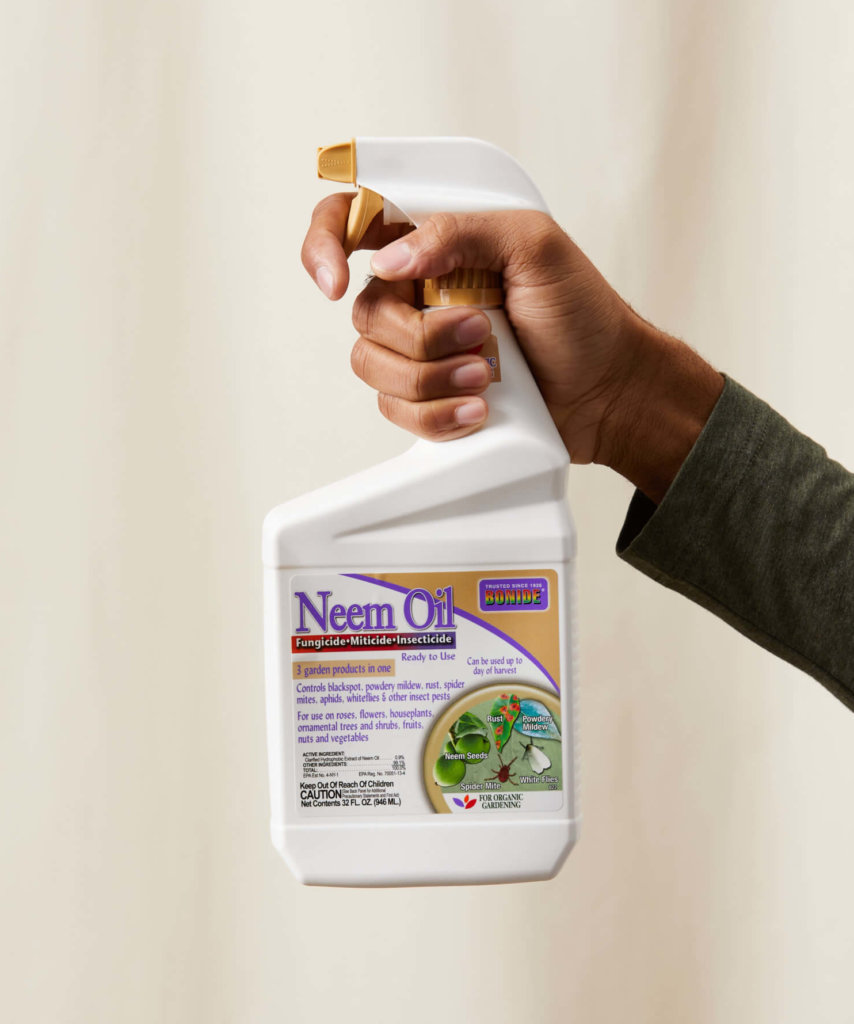
Next, you will need to treat the soil to kill the larvae and eggs. Pick one of the following options:
- Soap & Neem Oil Mixture: Pour or spray a mild soapy water and Neem Oil mixture into the top of the soil to kill the larvae. We suggest using 1 tsp of Dr. Bronner’s Baby-mild Liquid Soap per 1 liter of water. For the neem oil, follow the dilution rate on the bottle if it has one, but if it does not mention a dilution rate, using 1 tsp in the same liter of water is a good rule of thumb. This should be effective after a few treatments. Neem oil works great to kill houseplant pests and has a residual effect. Be sure to cover the entire top soil surface with the mixture.
- Hydrogen Peroxide: Mix one part 3% hydrogen peroxide with four parts water. Allow the top layer of your soil to dry, and then water your plants with this solution as you normally would. The soil will fizz for a few minutes after application; this is normal. The fungus gnat larvae will die on contact with the hydrogen peroxide. After a few minutes the fizzing stops and the peroxide breaks down into harmless oxygen and water molecules. Repeat weekly as needed to break the gnat’s life cycle.
- Mosquito Bits: Another good option is Mosquito Bits! Simply measure out how much you need according to the label, then add it to the water you are using to water the plant. Mosquito Bits use a naturally occurring bacteria, Bacillus thuringiensis v. israelensis, to kill mosquito and fungus gnat larvae before they mature into breeding adults. The larvae of these insects die within 24 hours of nibbling on the baited bits. Always read the direction on the label.
Step 3: Repot if necessary
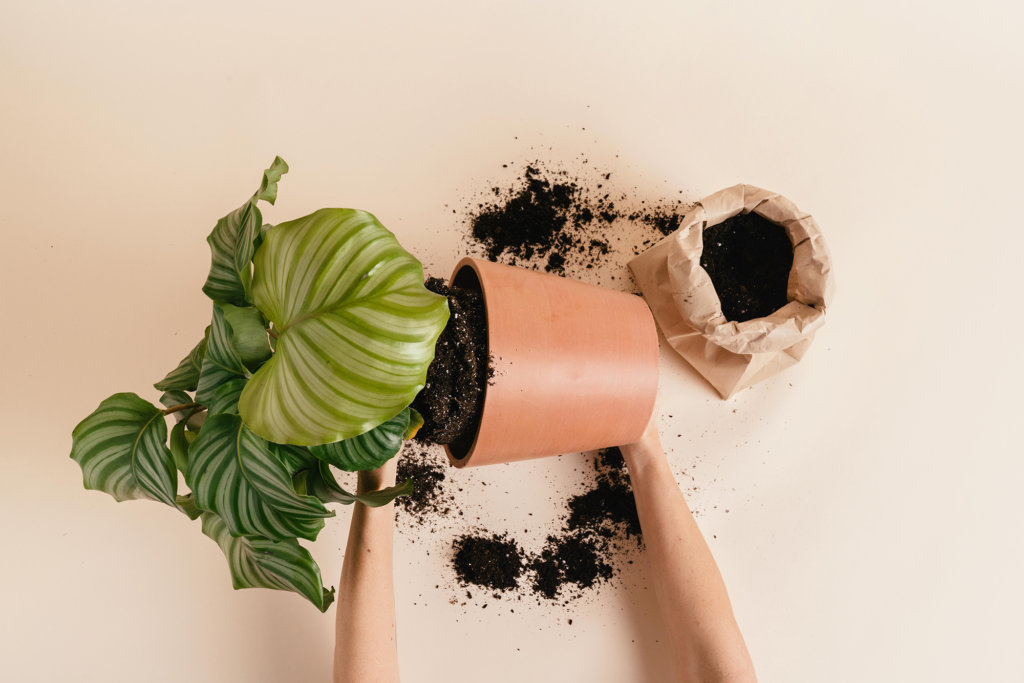
If the infestation is already out of control, you may want to consider repotting your plant with new, dry soil. Gently shake as much soil off of the roots as possible during this step. This will remove the eggs and larvae. The larvae could still hatch and mature in the soil after you remove it, so make sure you take it outside to the trash. To learn how to repot your plant, check out the Grow-How® Team’s blog here.
Tips to Prevent Soil Gnats in the Future
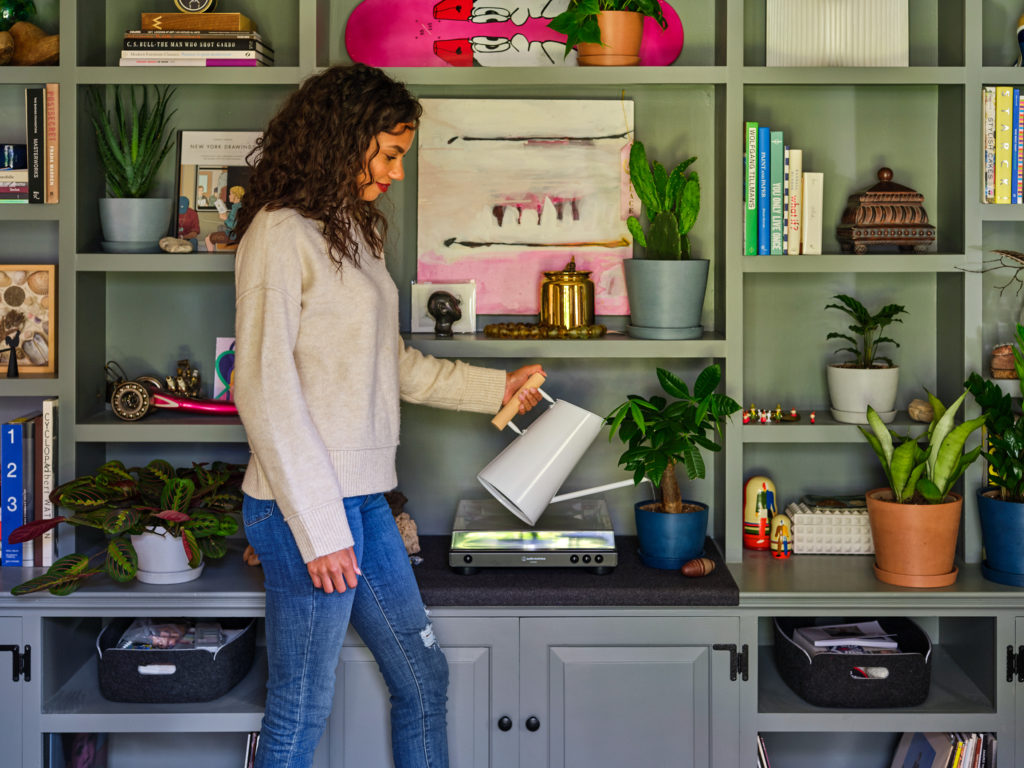
Avoid watering too frequently
Soil gnats are attracted to consistently damp soil, so if your plant can tolerate it, let the soil dry out a little more between waterings. This helps prevent overwatering and soil gnats from becoming a problem. If you are unsure how much you should be letting your plant dry out, check out our plant care guides.
Treat new plants right away
Since soil gnats are common in houseplants, they are also very common in the greenhouses in which they are grown. When you purchase a brand new plant, you can help to avoid future infestations by treating the new plant just to be safe.
Keep an eye out for gnats in the future
Continue to watch out for gnats. Even after they are eradicated, they can come back in the future. Since plants are living things, they can still attract these pests while inside your home. Gnats are small, so they can fly in through an open window or door. The best way to keep the infestation minimal is to treat your plants as soon as you see any signs of gnats.
